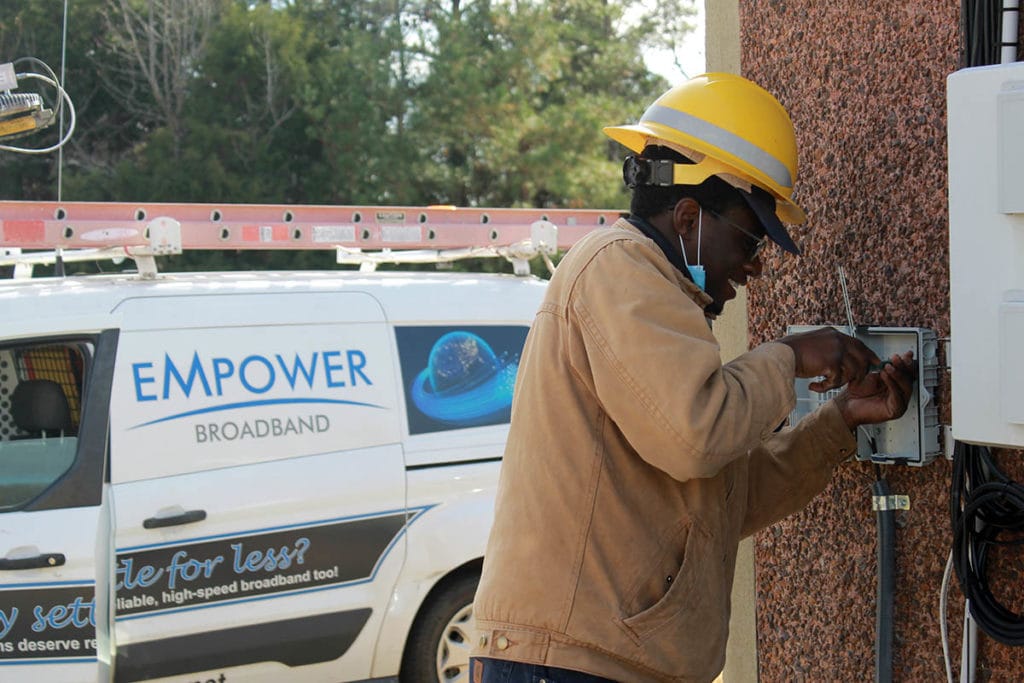Mecklenburg Electric Coop Seeks Relief From CAF II Mess
EMPOWER says existing FCC financing rules could imperil its ability to affordably serve locations in three Virginia counties.
Karl Bode

EMPOWER Broadband, a subsidiary of Mecklenburg Electric Cooperative (MEC) is asking the Federal Communications Commission to waive financing requirements attached to the provider’s takeover of thousands of subsidized broadband locations from RiverStreet Networks. It’s a move the cooperative says will save it millions of dollars in errant additional penalties.
It’s also highly representative of the ongoing challenges facing a program that has long been criticized for dysfunction and mismanagement.
The FCC program not only fell short of fulfilling its original promise, it now risks boxing numerous communities out from what could be a generational funding opportunity made possible by the 2021 infrastructure bill.
During the 2018 Connect America Fund (CAF) Phase II auction, RiverStreet was awarded $32.1 million in financing to provide high-speed Internet to 13,518 locations in Virginia. RiverStreet is looking to divest 3,757 locations across three counties, poised to receive $8.1 million in annual CAF II broadband deployment support.

According to a May RiverStreet filing with the FCC spotted by Broadband Breakfast, the divestment is necessary because the company “encountered certain obstacles that have prevented it from meeting its CAF II buildout milestones in the assigned CBGs.”
Riverstreet did not detail what those challenges were. Requirements affixed to the award required 80 percent network completion by the end of 2024 and 100 percent by the end of 2025. RiverStreet was required to build 60 percent of its assigned locations by the end of 2023, but has only deployed service to 26 percent of those locations.

As such, RiverStreet recently requested a transfer of 28 percent of those locations to EMPOWER – or roughly 24 Census Blocks in which it has no customers or network assets.
But EMPOWER – which has already deployed broadband to the 838 locations as part of a $1.8 million award it won at the same auction – says existing FCC financing rules could imperil its ability to affordably serve these locations in three Virginia counties.
CAF II auction rules require providers not in compliance with deployment targets to maintain a letter of credit equal to the amount of CAF II grants that had been distributed for the target location, plus any funding dispersed the next year.
All told, EMPOWER estimates it would be required to maintain a $6 million line of credit – and equal cash up front for collateral – to account for six years of CAF II support for the 4,595 CAF II locations that the provider will be responsible for building out and serving.
“The Commission should conclude that it would be unfair to impose the six-year letter of credit obligation on EMPOWER Broadband because the company’s non-compliance with CAF II deployment obligations is not a product of its own inability to meet these obligations,” EMPOWER wrote the FCC on July 5.
In short, EMPOWER is asking the FCC to waive all failed buildout requirements imposed on RiverStreet until December of this year, and provide it with any awards withheld from RiverStreet due to its failure to follow program rules.
Headaches abound
The Connect America Fund Phase II Auction distributed $198 million a year for 10 years to support high-speed Internet service in rural communities. But, just as with the FCC’s Rural Digital Opportunity Fund program, there has been widespread criticism about how the government managed the program and often failed to hold providers accountable.
More specifically, many providers applying for both grant programs either intentionally overstated their ability to meet deployment goals, or simply bit off more than they could chew, resulting in unfinished projects. Others claimed to have fulfilled their deployment promises, but never actually delivered the speeds and pricing promised.
That’s all a particular problem given that areas earmarked for RDOF or CAF II funds are excluded from participating in what’s arguably the biggest broadband subsidy program ever attempted in the U.S.: the Broadband Equity Access and Deployment program created by the 2021 infrastructure bill and overseen by the NTIA.
Both RDOF and CAF II heavily relied on self-reported broadband data that routinely was neither accurate nor confirmed (the FCC’s own broadband mapping data is notoriously unreliable). The result: many locations were promised access, never actually received it, and now find themselves boxed out of a once-in-a-generation broadband subsidy program.
A sustained push has been afoot to provide relief for providers and regions tethered to these older programs so they aren’t left out in the cold, but the results have been mixed, with the FCC generally refusing to deliver broader amnesty for providers in default.
In large part, the reason for doing so, the FCC claims, is because the program has met its obligations generally, and that most deployments tethered to the awards have been successful.
"RDOF and CAF Phase II support recipients have shown significant progress toward meeting deployment obligations, with only 4% of CAF Phase II carriers reporting not timely meeting buildout milestones, and with 71% of RDOF carriers reporting locations served a full year prior to the first deployment milestones required by the program," the FCC said last month.
But a recent joint study by Ookla, UC Santa Barbara and UC Berkeley suggests that the agency may be dramatically overstating the program’s coverage success – and the speeds being seen by users in the real world.
“Our analysis reveals significant discrepancies, with a serviceability rate of only 55.45%, indicating that a significant fraction of addresses certified as served are still unserved,” the study found. “Furthermore, we observe a compliance rate of only 33.03%, indicating that a significant fraction of served addresses receive download speeds that are non-compliant with the FCC’s 10 Mbps threshold for CAF served addresses.”
The study defines “serviceability rate” as the fraction of addresses ISPs actively serve out of the total queried, weighted by the number of CAF addresses in a census block group.
The study found that the majority of the CAF II program funding went to just three major broadband monopolies, which have stopped offering broadband service to as many as half of the homes and businesses they once vowed to serve since program funding stopped three years ago. In some territories, AT&T saw a serviceability rate of just 18 percent.
The low speed threshold for minimally acceptable service – a paltry 10 Megabits per second (Mbps) downstream, 3 Mbps upstream – also ensured that the problem could never truly achieve the goal of uniform connectivity. Even government officials that actively worked on the program acknowledged that it was a money sink with insufficient oversight.
“Although we observe that CAF-served addresses occasionally receive higher download speeds than their monopoly-served neighbors, overall, the CAF program has largely failed to achieve its intended goal, leaving many targeted rural communities with inadequate or no broadband connectivity,” the Santa Barbara and Berkeley researchers concluded.
Ensuring that unserved rural communities aren’t boxed out of a once-in-a-lifetime funding opportunity requires an FCC willing to dutifully confirm real-world broadband data and hold some of the biggest, most politically-powerful broadband providers’ feet to the fire, neither trait being something the agency is well known for.
But ensuring these rural communities aren’t left out of the loop also requires the FCC to quickly and deftly adjust to solutions for unfulfilled promises on the fly, granting expedited relief to providers and cooperatives like EMPOWER interested in doing the heavy lifting to finally bridge the digital divide in the affected project areas.
This article was originally posted by Community Broadband Networks Initiative Institute for Local Self Reliance on August 12, 2024, and is reprinted with permission.










Member discussion